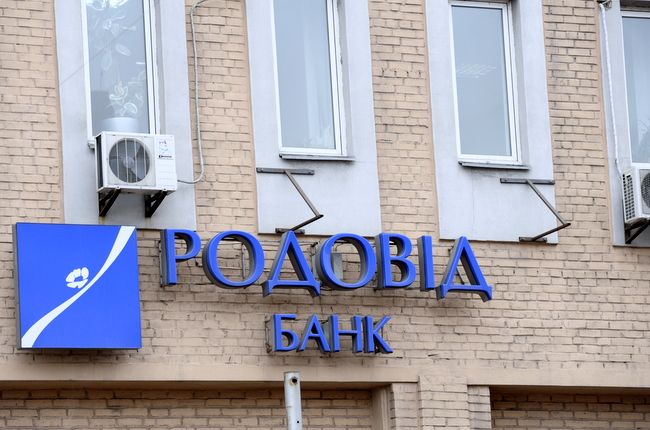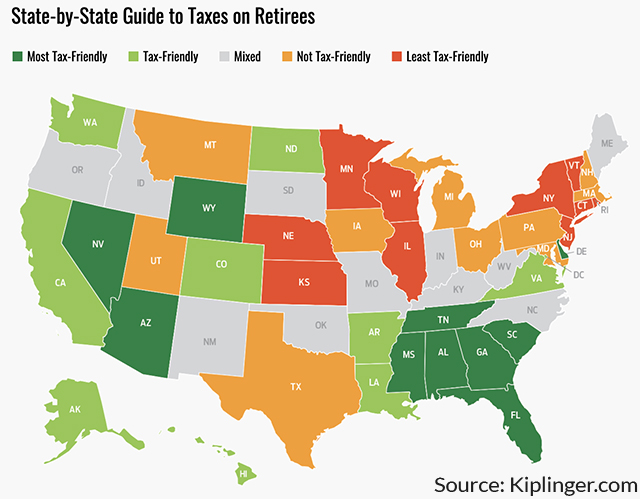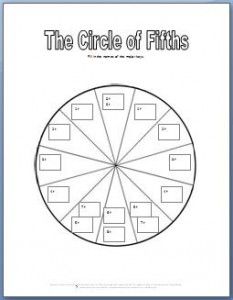Contents
This was intended to promote the use of value-at-risk among the firm’s institutional clients. The service comprised a technical document describing how to implement a VaR measure and a covariance matrix for several hundred key factors updated daily on the internet. For 1% daily VaR count the least 1% of the returns out of 30 values, which shall be 0.3rd value. Email and mobile number is mandatory and you must provide the same to your broker for updation in Exchange records.

Investors and traders, therefore, give high importance to quantifying the risk through the measurement of volatility. However, the key shortcoming of such measurement is the value of ris indifference in the direction of fluctuations. It is better understood as the quantitative measure of the worst-case scenario translate into maximum potential losses.
These funds come into play when a bank should take up losses without ceasing enterprise operations. These funds are generated particularly to assist banks when losses are absorbed so that common business features wouldn’t have to be shut down. RORAC doesn’t add much threat-adjustment to the numerator, common ledger Net Income, but it could take into account the danger of sudden loss. The Sharpe ratio could be manipulated by portfolio managers looking for to boost their obvious risk-adjusted returns history. For instance, the annualized normal deviation of every day returns is generally larger than that of weekly returns which is, in turn, greater than that of month-to-month returns. Another variation of the Sharpe ratio is the Treynor Ratio that uses a portfolio’s beta or correlation the portfolio has with the remainder of the market.
Accredited Financial Analyst
In this method, value at risk is measured by creating a number of different scenarios for the future using a nonlinear pricing model. This method is suited when a large variety of risk measurement problems is present. RAROC takes ROE to a totally danger-adjusted metric that can be utilized on the entity level. This can also be damaged down for any and all traces of enterprise throughout the group. The investor believes that including the hedge fund to the portfolio will decrease the anticipated return to eleven% for the approaching 12 months, but additionally expects the portfolio’s volatility to drop to 7%. He or she assumes that the danger-free fee will remain the same over the approaching 12 months.
What are the 2 main types of risk?
The two major types of risk are systematic risk and unsystematic risk. Systematic risk impacts everything. It is the general, broad risk assumed when investing. Unsystematic risk is more specific to a company, industry, or sector.
Value-at-threat models are typical EC frameworks for market, credit score threat, and other risks. However, for credit score threat, it is normally known as credit score worth-at-risk . As an example, contemplate the loss distribution of a mortgage portfolio for relatively safe loans. For instance, an earnings-producing factory just isn’t assured to generate constructive cash flow. Positive money move may rely upon capital costs, plant restore, maintenance, labor negotiations, and many different factors. For a monetary asset, corresponding to a company bond, profitability depends on rates of interest and the default risks of the issuer.
It has been proven that, whereas losses may accrue in larger-risk funds during risky durations, funds with a larger urge for food for danger are more likely to outperform their benchmarks over full market cycles. This is pure, I suppose, since ROE, meaning Return on Equity of course, is merely a three-letter profitability ratio. A severe breakthrough in risk administration and revenue efficiency measurement should move up to at least six initials in its abbreviation. It is the sum of money that is needed to safe survival in a worst-case state of affairs. In this calculation, instead of adjusting the danger of the capital itself, it’s the risk of the return that is quantified and measured. Often, the expected return of a venture is split by worth in danger to reach at RAROC.
The historical method is the easiest and the simplest method of calculating the VaR. It uses the market data for a long period of time like the past 250 days to calculate the percentage of change in every risk factor and arrange them in the order of worst to best. This method helps in calculating the probability of the worst outcome that helps in decision-making as the premise of this method is that history repeats itself.
Monte Carlo Method:
The denominator on this ratio is somewhat sophisticated, as every asset owned must be rated by its ability to perform as expected. The danger-adjusted return on capital metric was developed by Banker’s Trust in the Nineteen Seventies to give a better sense of the firm’s threat/reward profile, more than the more simple return-on-capital . It has turn out to be extensively used in the monetary markets to measure danger as a part of the Basel IIIreporting requirements. This arises when the borrower pays off the loan sooner than the due date. This may result in a change in the yield and tenor for the mutual fund scheme.
Additionally, the capital tiers differ of their ability to absorb losses; Tier 1 capital has one of the best skills to soak up losses. Risk-adjusted return on capital is a useful tool in assessing potential acquisitions. The basic underlying assumption of RAROC is investments or initiatives with larger ranges of danger offer considerably larger returns.

And sometimes, it is also difficult to estimate the inputs used for calculating VAR. Value at Risk is one unique and consolidated measure of risk, which has been at the center of many expectations, popularity, and controversy. It is also referred to as a summary statistic that quantifies the asset or portfolio’s exposure to market risk. It has been in the news for many wrong reasons as much popularity it gained among the financial market dealers since 2008 wall street crash. Here we will take a look at what are the qualities which made this statistic gain popularity and notoriety at the same time. Value-at-risk is a Probabilistic Metric of Market Risk used by banks and other organizations to monitor risk in their trading portfolios.
One large purpose for the rising recognition of ROE is just that it isn’t asset-dependent. If not, nicely, lets simply say it’s too late to read about this general subject. The larger the danger-adjusted capital ratio, the better the flexibility of the financial institution to face up to an economic downturn.
Though usually considered as a good option to calculate risk, it is believed that it incentives investors towards ‘excessive but remote risk’. Equity shares and equity related instruments are volatile and prone to price fluctuations on a daily basis. Broadly speaking, in business enterprises, risk is traded off in opposition to benefit.
For example, if its 5% VAR of 2% over the next 1 day and the portfolio value is $10,000, then it is equivalent to 5% VAR of $200 (2% of $10,000) over the next 1 day. Was “potentially catastrophic when its use creates a false sense of security among senior executives and watchdogs.” On a common stock, it can be estimated for any horizon depending on the frequency of trade or user requirement. Trading in “Options” based on recommendations from unauthorised / unregistered investmentadvisors and influencers. A company with a VaR of Rs 20 lakh at 5 percent probability in a given year will mean that there is a 5 percent probability that the company will lose a minimum of Rs 20 lakh in that year.
View American Academy of Financial Management’s profile
Making VaR reduction the central focus of the risk management process/strategy. The greatest benefit of VAR is that it imposes a structured methodology for critically measuring risk. Institutions that go through the process of computing their VAR are forced to keep https://1investing.in/ a check on their exposure to financial risks and to set up a proper risk management function. Thus the process of getting to VAR may be as important as the number itself. The methods used for calculating VaR actually hold the key to the reliability of the estimate.
What are the 6 elements of risk?
- Step One: Identify Risk.
- Step Two: Source Risk.
- Step Three: Measure Risk.
- Step 4: Evaluate Risk.
- Step 5: Mitigate Risk.
- Step 6: Monitor Risk.
The entire point of VaR is that losses can be extremely large, and sometimes impossible to define, once you get beyond the VaR point. To a risk manager, VaR is the level of losses at which you stop trying to guess what will happen next, and start preparing for anything. This is a question that almost every investor who has invested or is considering investing in a risky asset asks at some point in time. Receive information of your transactions directly from Exchange on your mobile/email at the end of the day. Conditional VaR is the calculator of the average losses that usually occur beyond the VaR point within a distribution. The usual consideration is that it is always better to have a smaller CVaR.
a. Historical Method
It does this, by moving past simply book or average Equity, by allocating capital, or equity, differentially to numerous strains of business and even specific products and purchasers. This, in turn, makes it potential to move towards threat-based pricing on the relationship administration stage in addition to portfolio danger administration. This fairness, or capital, allocation should be based on the relative threat of surprising loss for the different product groups. Using VaR assessment at such a firm-wide level allows them to determine the cumulative risks from aggregated positions held by different trading desks and departments within the investment bank. There are also disadvantages of Value at Risk like it does not tell you the expected loss if the loss goes beyond the minimum threshold. Even the risk of liquidity is not considered directly, it just focuses on the market risk.
- The methods used for calculating VaR actually hold the key to the reliability of the estimate.
- Tier 1 capital consists of shareholders’ equity and retained earnings—disclosed on their financial statements—and is a main indicator to measure a bank’s financial well being.
- Please note that your stock broker has to return the credit balance lying with them, within three working days in case you have not done any transaction within last 30 calendar days.
- JP Morgan released the first detailed description of value-at-risk as part of its free Risk Metrics service.
So, equity capital tends to be the most costly supply of funds, carrying the largest risk premium of all funding choices. Its successful deployment is critical to the revenue performance, even the survival, of the financial institution. Indeed, capital deployment, or allocation, is the most important government determination dealing with the leadership of any organization.
Methods of calculating Value at Risk?
It is calculated based on the portfolio’s standard deviation and the rate of return as well as that of the individual security. The calculation of value at risk is primarily based on a few assumptions which make the results subjective. If the users make an error in the basic assumptions, the results will not show an accurate analysis of the evaluation of maximum potential losses.

Different segments of the Indian financial markets have different settlement periods, and such periods may be extended significantly by unforeseen circumstances. Further, delays in settlement could result in temporary periods when a portion of the assets of the Scheme are not invested and no return is earned thereon or the Scheme may miss attractive investment opportunities. The RORAC is much like return on fairness , besides the denominator is adjusted to account for the risk of a venture. Basel II additionally units out regulatory steering and guidelines for modeling regulatory capital and encourages corporations to make use of financial capital models. EC, as a concept and a danger gauge, just isn’t a current phenomenon however it has quickly become an essential measure amongst banks and monetary establishments. Economic Capital refers to the capital of a financial institution which is completely different from the regulatory capital required by regulators.
What are the 3 elements of risk?
While many individuals are involved in the process and many factors come into play, performing an effective risk assessment comes down to three core elements: risk identification, risk analysis and risk evaluation.
Easy to Interpret- As VAR is measured in terms of currency or as a percentage, it is easily understood by the analysts and can simply be applied to their analysis. For Example, to compute the 5% monthly VAR, we look at the 5th percentile of the monthly return distribution. Value at Risk can also be stated as a percentage of the portfolio i.e. a specific percentage of the portfolio is the VAR of the portfolio.

